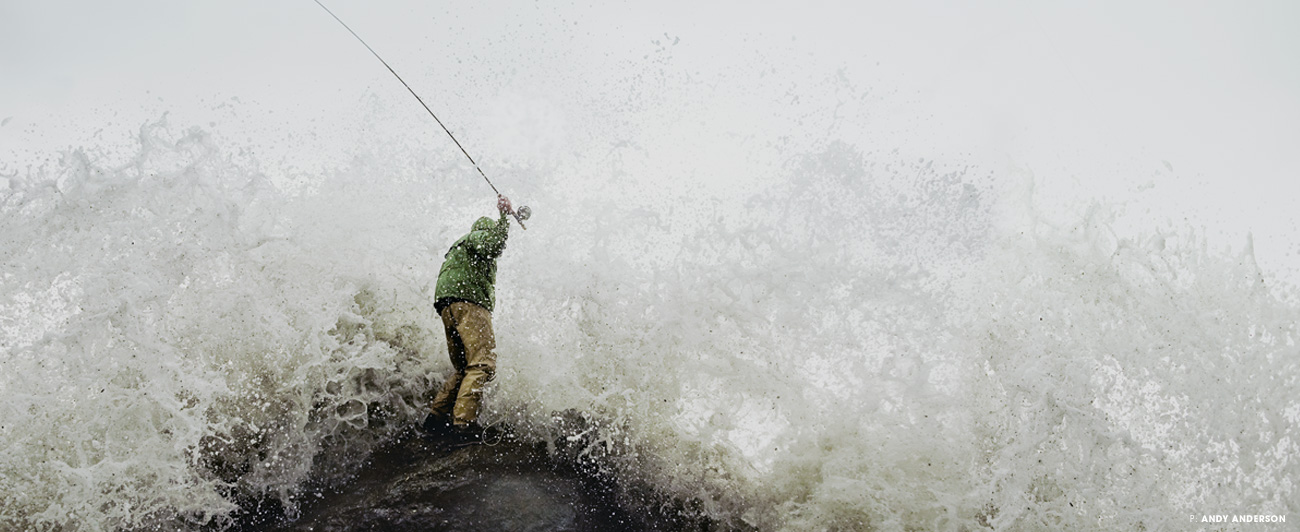Anniversary
The Flyfish Journal Turns 10
Clearly Absurd
Though the idea had been lodged earlier, it was one particular moment 10 years ago that led to our steep launch on the Upper Rubicon.
At one of the first Fly Fishing Film Tours, bumping elbows with a couple hundred other sufferers of piscine DTs, one film distinctively stood out as a media salvo: Felt Soul’s release of Running Down the Man took a tired format and upended the model. Without guides, fishing celebrities, quarter-million-dollar boats, or corporate support, they pioneered a fishery in Baja requiring limitless attention, athleticism and Jedi response powers. And dune buggies.
I wanted in.
Encouraged by Justin Crump, Kate Taylor, Chris Owens, Jay Johnson, Rob Elam, Kirk Deeter, Dylan Tomine and a host of other local playground cheerleaders, our crew leapt for the monkey bars—and without guides, fishing celebrities or a quarter million dollars—grabbed on.
Tim Romano had already signed on as our first photo editor and was in the midst of selling ads for his own trade magazine when his prospective client interrupted: “Have you heard about these guys launching a flyfish journal for $13 an issue?! They’re effin’ crazy!” Tim simply agreed and moved the conversation along.
Today, the company that gentleman represented is one of our strongest supporters.
Along with Romano and the aforementioned folks, we also want to thank our other pre-launch supporters: Andrew Steketee, Brian Bennett, Tim Pask and others. Your confidence gave us confidence.
Of course, the contributions of past and current crew can’t be overstated, including Copi Vojta, Ben Romans, Liam Gallagher, Colin Wiseman, Jessie Carlson, Matt Wibby, Jessie Lu Galbraith, Carey Ross, Jessica De Boer, Ben Kindlon, Miles McCulley, Amanda Monthei, Riverhorse, Jason Rolfe and an army of interns.
And special thanks to Steve Duda, for his long-served tenure and final issue as the most recent editor. You’ve kept it elegant and powerful.
What I saw in Running Down the Man—the raw embrace of adventure, total devotion to the moment, a penchant for the clearly absurd—I saw in every face in the foyer of Bellingham’s Mount Baker Theatre that fall afternoon. And I knew if we could bottle this in a permanent, archival format, flyfishers would support it.
Ten years down the road in our own media dune buggy, our readers are riding shotgun and enjoying The Flyfish Journal films, web features and, of course, the quarterly print journals.
Our decade mark is a testament to flyfish culture itself, and this issue is a heartfelt thank you from The Flyfish Journal to our still-growing community.
Thanks, you bunch of lunatics.
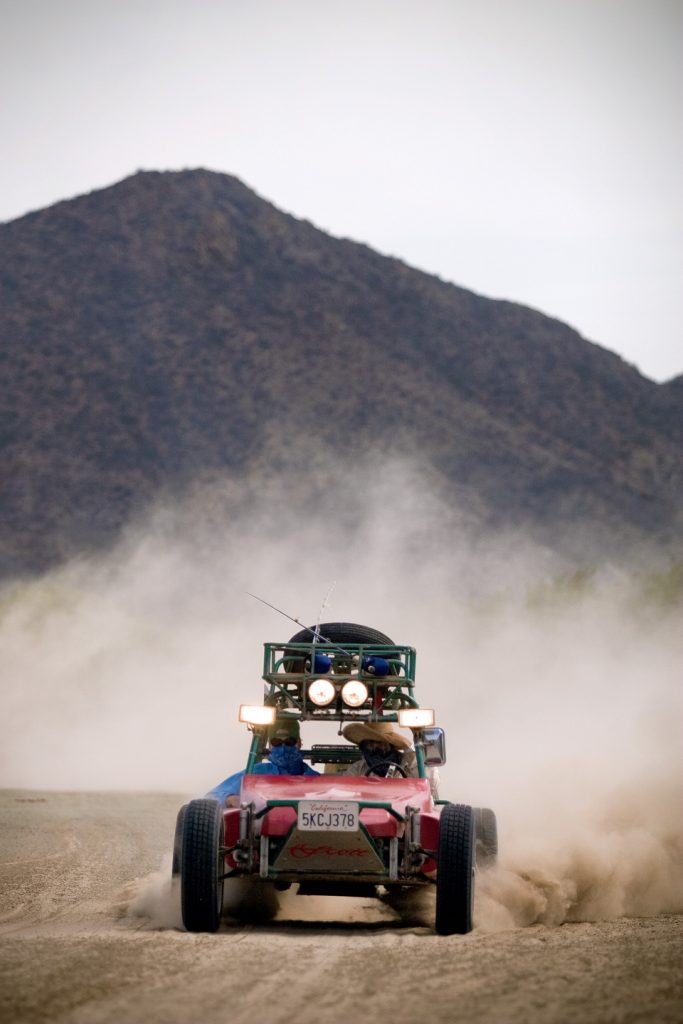
above Filmmaker Travis Rummel (passenger) and angler Frank Smethurst (driver) traverse to a dry wash in a borrowed rail during the filming of Running Down the Man in the Sea of Cortez.
Photo: Ben Knight
Volume Two, Issue Three
who does this
In the morning we were treated to a “gourmet” breakfast, where it took three gulps from a large glass of water before I realized it was, in fact, straight vodka. I drained the rest without pause.
Dylan Tomine, “The Price of Kola Chrome”
Volume One, Issue One
Steinar Vilhjalmsson, a local licorice factory owner, is rambling in a tongue I have no hope of understanding. But even though he’s speaking a Viking dialect virtually unchanged in 1,000 years, I get the gist of what he’s saying: “Fish on!”
Mitchell Scott, “Iceland Plains”
Volume Two, Issue One
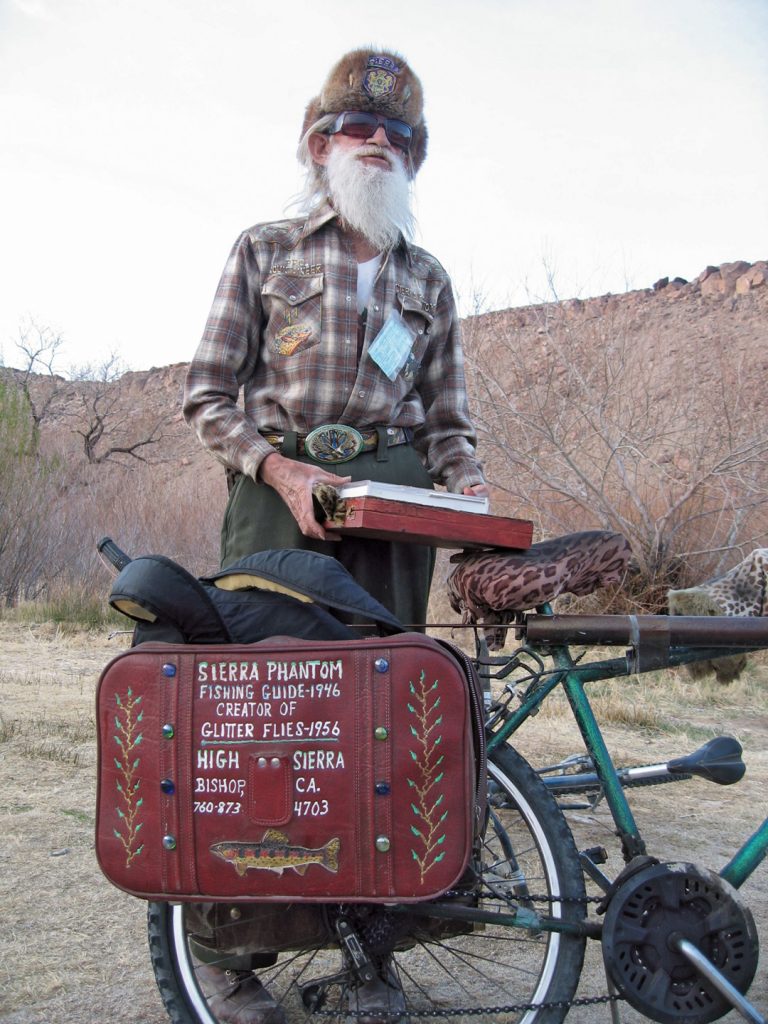
above Preparing glitter flies. Photo: Matthew Francis
Volume One, Issue One
Show me an angler with several dozen fishing friends, and I’ll show you a guy who needs to take up line dancing.
Tosh Brown, “Old Buddy, Old Pal”
Volume Two, Issue Two
Fishing will not make you a more productive, healthy member of society.
Miles Nolte, “Flyfishing Ruins Lives”
Volume Three, Issue Two
As I slid on my rarely used flats boots, I asked Slick if he typically wades barefoot. “I do,” he replied. “I don’t own any shoes.”
Brian Irwin, “Boots Optional: Slurping Conch with Bonefish Slick”
Volume Four, Issue Three
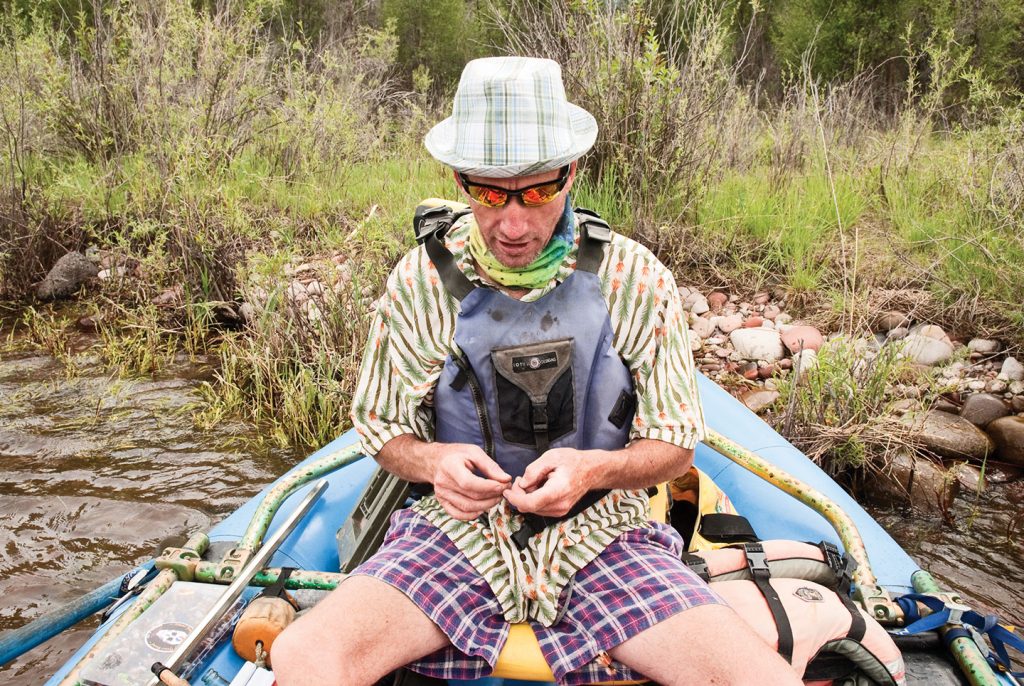
above Kea Hause had the best guide wardrobe ever. The sweet plaid fedora is from a gas station in Newcastle, CO, and those trousers could be either boxer shorts or jammies. On the days he was feeling good or had limited options due to laundry, you’d see Kea dressed in his finest, anchored along Colorado’s Roaring Fork to re-rig. Photo: Copi Vojta
Volume Six, Issue Four
I crafted a resume summary: “Work-averse guy with useless degree seeks job in bad economy.” Perfect.
Dave Karczynski, “Kidney Country”
Volume Five, Issue Two
In high school, a guidance counselor asked [Joan] Wulff what she wanted to do with her life.
“I said, ‘I Don’t know,” she recalls. “She asked, ‘What do you like to do?’ I said, ‘Dance and cast.’”
Morgan Sherburne, “Just To Be Here: The Fishing Lives of Joan Wulff”
Volume Five, Issue Three
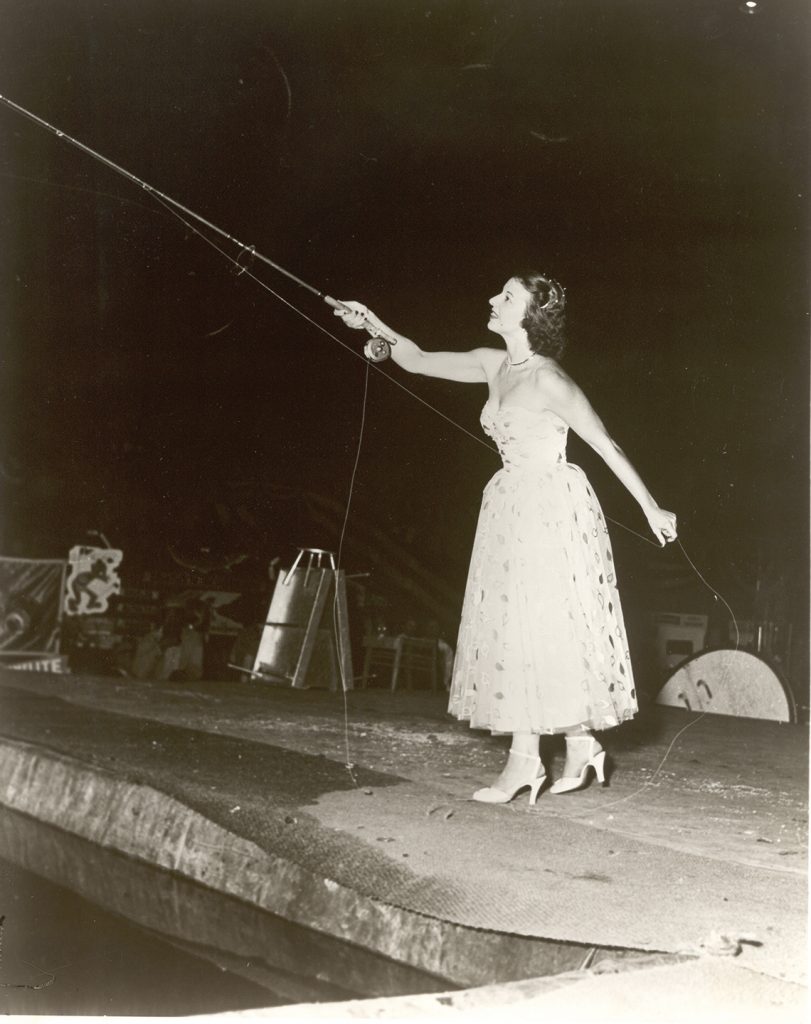
above “This is from 1954,” Joan Wulff says. “I usually demonstrated in shorts, with a creel on my hip and rolled-down hip boots. The emcee suggested I cast in a dress instead, while he described casting in lyrical terms. The dress was white, with silver leaves, high-heeled sandals, rhinestones around my neck and in my hair. The audience loved it.” Location: St. Louis, MO.
Photo: Courtesy Joan Wulff and R.L. Winston Rod Co.
Volume Five, Issue Three
It was early fall. I buried a 32-pound carp under the pitcher’s mound. I had read they were lucky….
Nathaniel Riverhorse Nakadate, “A Curve Ball is Not Really the Answer”
Volume Seven, Issue Two
Saunders has met and guided many notable figures—including Richard Nixon and Joe Namath—and credits himself with the concept of the Super Bowl, an idea he claims to have hatched while guiding Pete Rozelle, NFL commissioner for 30 years. But his most notable client was Dr. Martin Luther King Jr.
Brian Irwin, “When the Mountaintop Met the Mangroves”
Volume Nine, Issue One
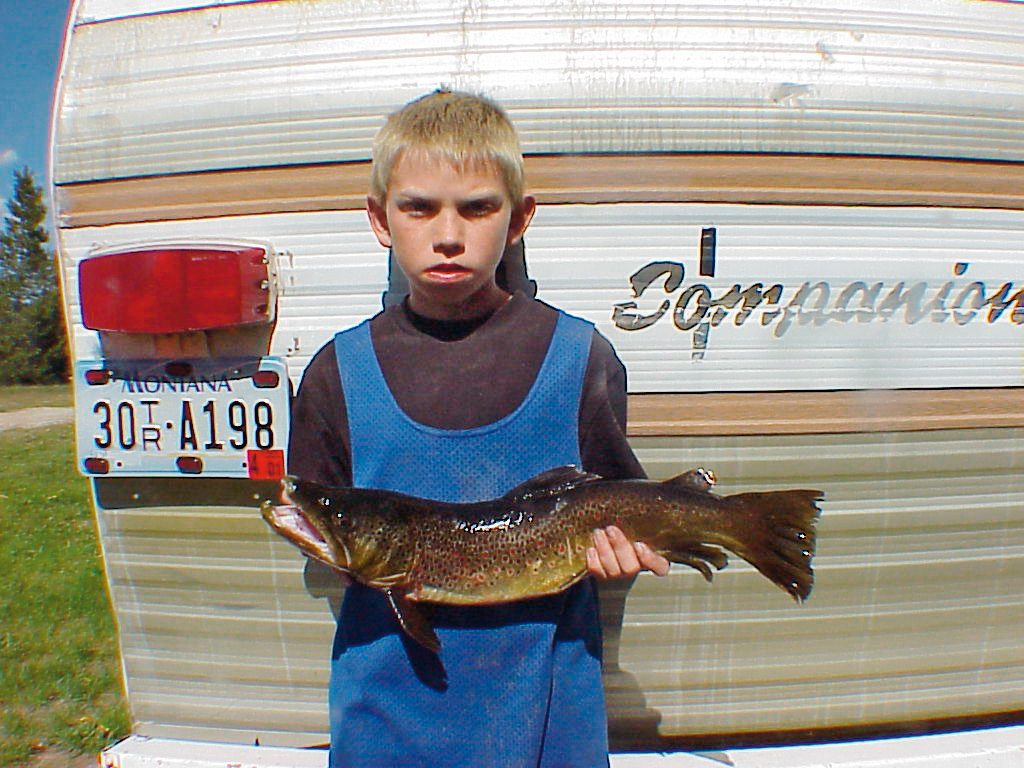
above Photo: Ben Marcus
Volume One, Issue One
where this happens
There are persons, places and things that live up to all you read and hear, and some that don’t. In my experience, the things that have lived up to the hype include: the women of Rio de Janeiro, the Northern Lights, Guinness from the tap in Ireland, the surf on the Hollister Ranch, Norway.
This was only my third day in Montana, but I was already a believer.
Ben Marcus, “Native Sons”
Volume One, Issue One

Photo: Matthew Awalt
Volume Three, Issue Three
The wind is rolling down the east slope of the Cascades. It blows so hard it sucks. Unrelenting. So much confidence frayed to nothingness—tattered like a Tibetan prayer flag hung in the suburbs.
Steve Duda, “The Wind Remains the Same”
Volume Two, Issue One
Admit it: If you have walleye in your lake, Canadians have legion in theirs. If you have big pike, theirs would eat yours. Your lake trout are few and far between and you don’t even have grayling.
Horatio Nailknot, “Maria Lake”
Volume Two, Issue Two
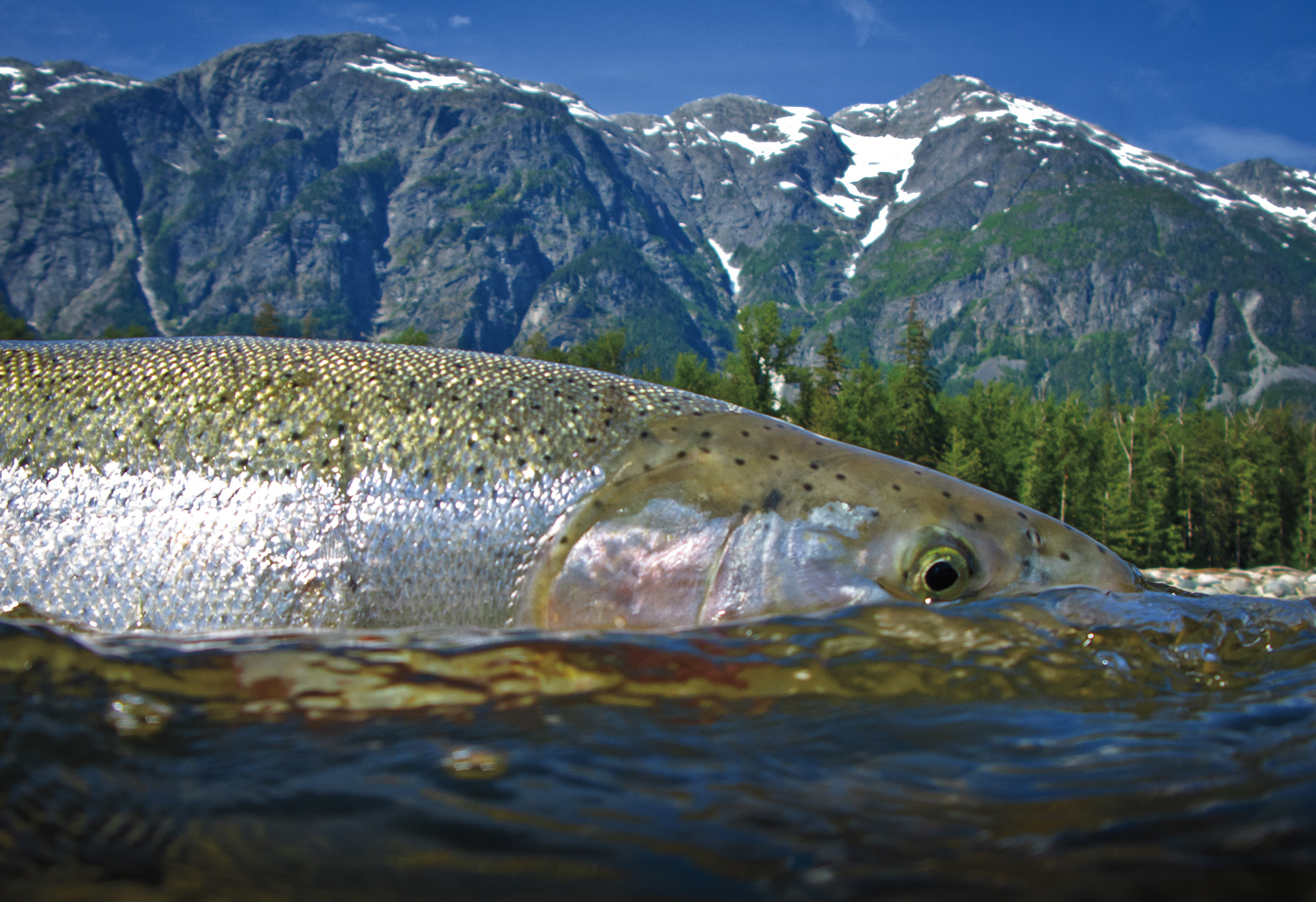
above My backyard is better than yours. A summer-run steelhead released in the shadow of Kimsquit Peak on the Dean River, BC. Photo: Adam Tavender
Volume Three, Issue Three
Both Koreas have remained technically at war since signing an armistice in 1953 and inside the 2.5-mile strip of no man’s land called the Demilitarized Zone—the most heavily mined and guarded border on the planet—these politically confused trout reportedly grow to more than 25 inches inside their barbed-wire sanctuary.
Matthew Awalt, “Lost Creeks of the Hermit Kingdom”
Volume Three, Issue Three
A crocodile about 10 feet long launched itself out of the cover of the mangroves and tail-walked the length of the pool. I ran—fortunately it was hard-packed sand.
Peter Morse, “Inflated and Agitated: Crocs and Near Death Down Under”
Volume Four, Issue Four
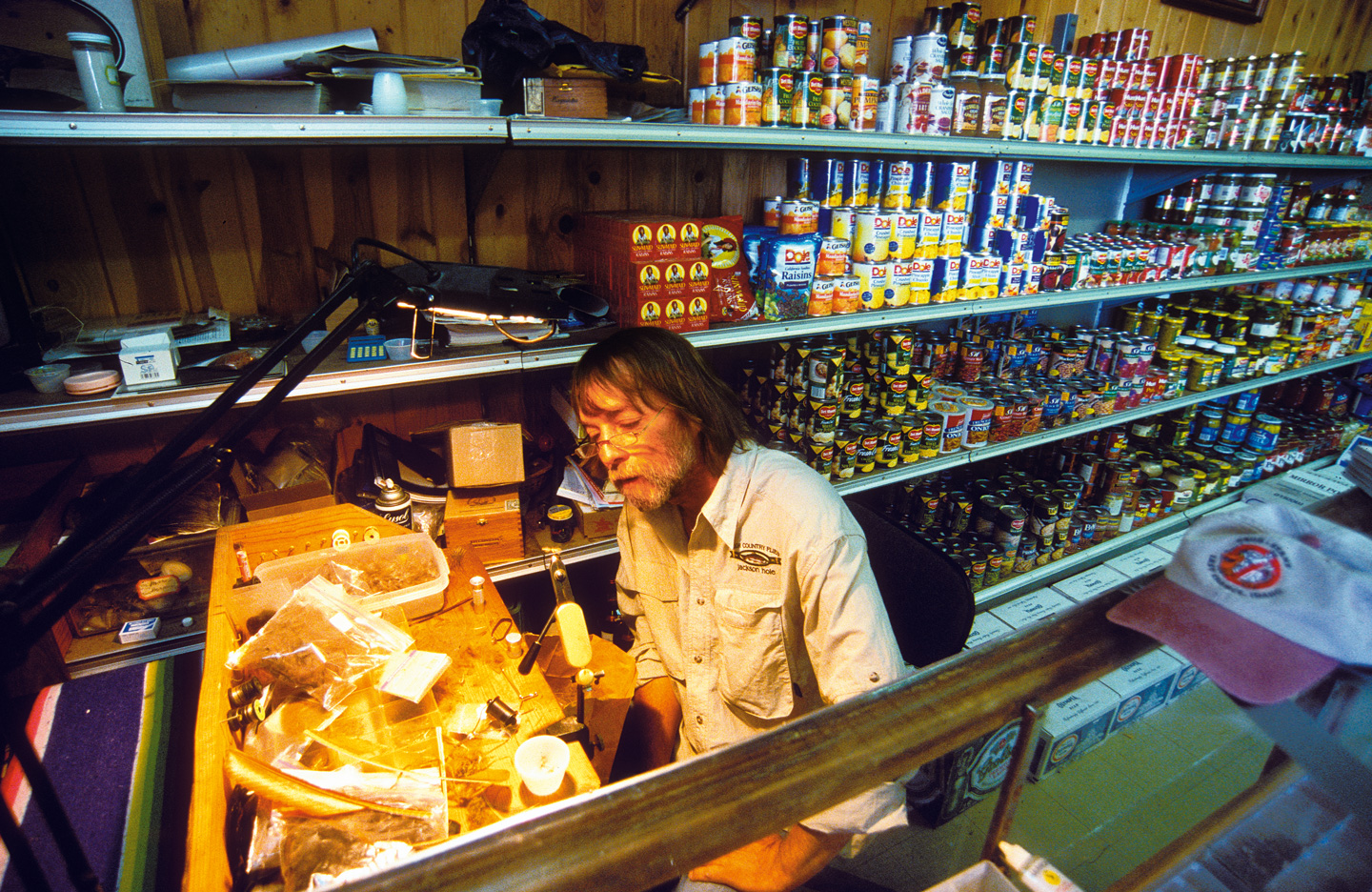
above Grocery store fly factory. Owner and commercial fly tier Brad Smith getting caught up on Sparkle Duns during some Henry’s Fork down time. Last Chance, ID. Photo: Ken Tsurusaki
Volume Two, Issue One
I fished alongside Bosnians, Italians, Macedonians and others, catching brown and rainbow trout and grayling. I don’t know if they had war stories or not. But I do know that if they did, the Ribnik River was not a place they were going to tell them.
Jason L. Rolfe, “Battle Scars: Fishing Through Bosnia’s Battlegrounds”
Volume Six, Issue One
Did we really expect that because the river offered us fish and beauty and mystery and magic, it wouldn’t also offer discomfort, disquiet and, possibly, even physical harm?
Hilary Hutcheson, “Winners and Fools: Thoughts on a Winter Float”
Volume Seven, Issue Two
After 11 days in Bhutan, we finally lay our eyes upon the upper reaches of the Drangme Chhu. We also lay our hands on our first golden mahaseer…. This section of river is called the King’s Run and requires written permission from the monarch to fish.
Dave McCoy with Steve Duda, “The King’s Fish: Descending Bhutan’s Threatened Drangme Chhu.”
Volume Seven, Issue Four

above “Fly Fishing II” Miramichi River
salmon pool. Artwork: Andrew Giffin
Volume Two, Issue Two
In El Salvador, there is a traffic-light security device that you must attempt to pass through. Green means go surf and fish. Red, forget it. Strip search. I have attempted to get through that damn light eight times and got red every time—eight for eight.
Nathaniel Riverhorse Nakadate, “Strange Customs”
Volume Eight, Issue One
We were miles from any town or village, on a crystal-clear river in the hot African sun, surrounded by Africa’s ruggedness, and in absolute peace—minus the four AK-47s, crocodiles and the rock pythons.
Jamie Melvin, “The Mother Country: Exploring Ethiopia’s Untouched Water”
Volume Nine, Issue One
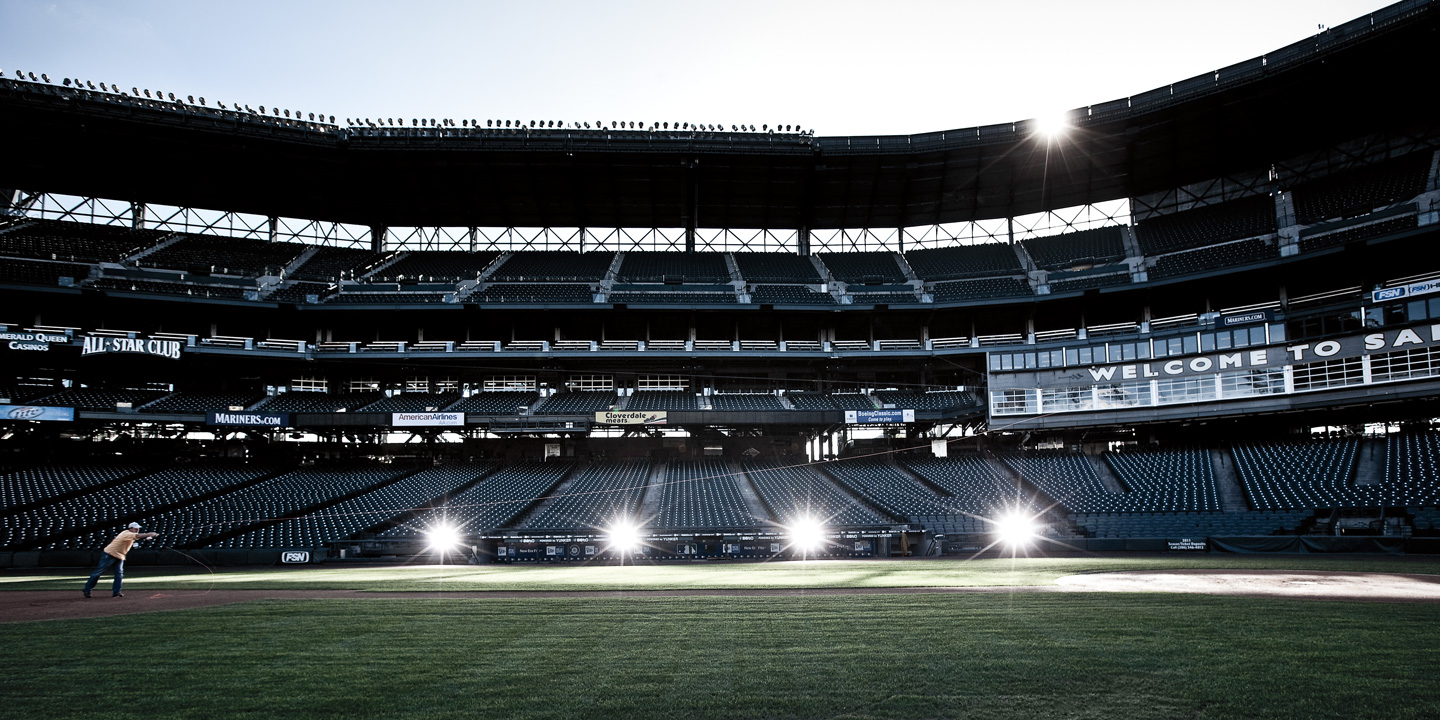
above Everyone knows it’s 90 feet from home plate to first base—a vision of a 90-foot cast in terms any American can understand. Photo: Ed Sozinho
Volume Three, Issue Two
what’s in there
Ironically, [Richard] Brautigan probably summed it up best, as he related Hemingway’s take on material possession within the context of [the movie] Tarpon: “You can never really own anything until you can give it away… tarpon… if you release him, you have him in your mind forever.”
Kirk Deeter, “Eden’s Tarpon”
Volume One, Issue One
A mountain whitefish is the fat kid from fifth grade: slow, clumsy and the last one picked for dodgeball; one step above the sucker, but held in lower regard than the catfish…. Once hooked they slog around the bottom like a waterlogged boot until they resign themselves to failure, quickly plopping aboard the drift boat.
Kea C Hause, Esq., “Bonedale Whitefish Report”
Volume Two, Issue Two
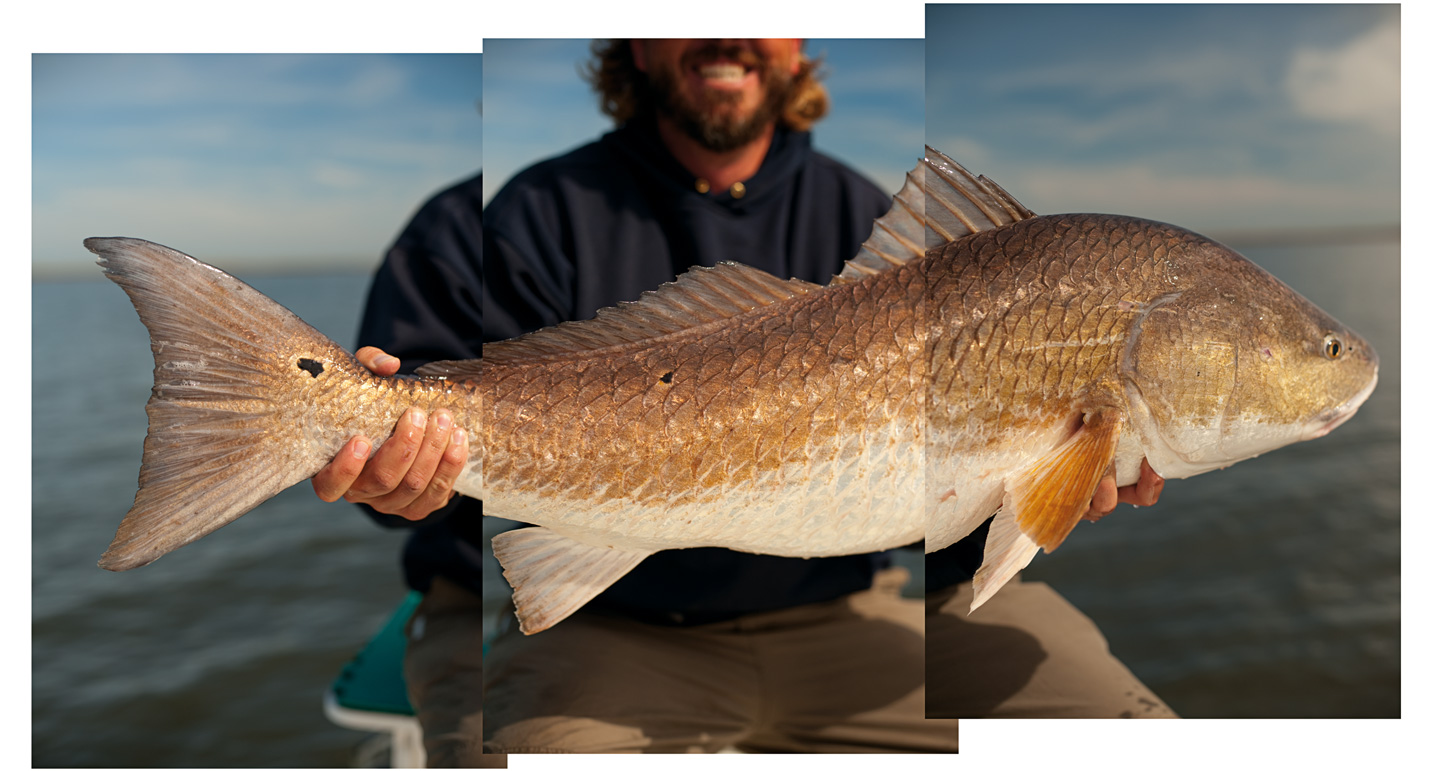
above Breaking the winter doldrums: Travis Holeman with a 40-pound bull red. Hopedale, LA. Photo: Tim Romano
Volume Two, Issue One
Before those last days of sex and death, Chinook will jump and spin and fight like welterweights with a world championship belt on the line. When caught on a fly, a Chinook becomes a junkyard dog, a washing machine stuck on spin cycle, a Flamenco partner who just can’t wait to get away.
Aimee Brown, “Scratch Tickets: Training for Chinook on the Oregon Coast”
Volume Four, Issue Three
Fighting a Georgia-bred striped bass is like fighting a person.
Zach Matthews, “Bomb the Bass”
Volume Five, Issue One
Walleyes were the fish of my father and uncles. Dredged in flour and fried in bacon grease they remain the holiest burnt offering for the cult of sky-blue waters. In the land of 10,000 lakes, they are the fatted calves.
Gregory Fitz, “Half-Hearted Throbs”
Volume Five, Issue One
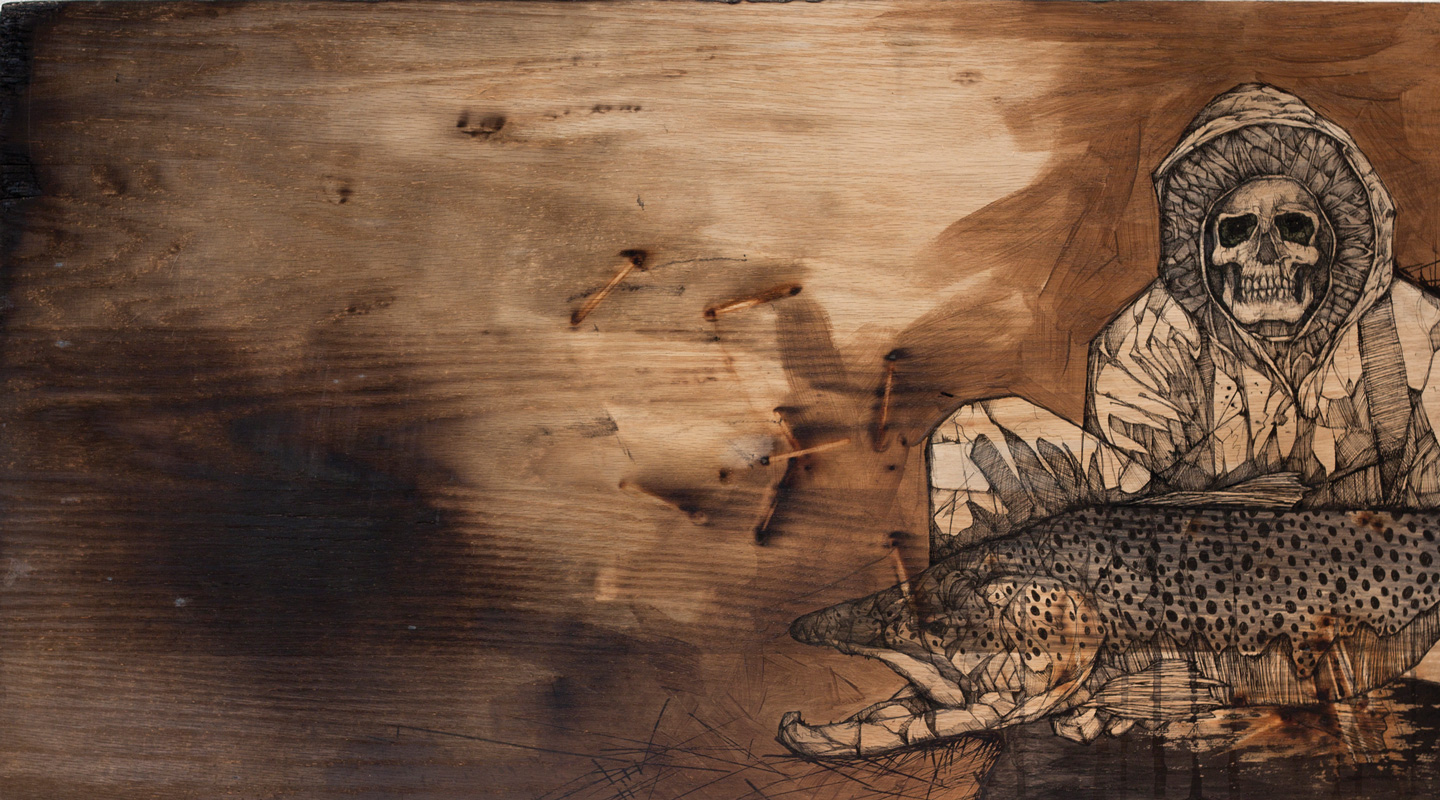
above “Necromancer: Creeper of MKE”
Mixed media on charred wood panel
36” x 20”
2015
Artwork: Jake Keeler
Volume Seven, Issue Two
The fish of 10,000 casts, my ass. Darrin stuck one in two. Boated his first musky on the second pitch. While on his cell phone. With his wife. With a trout set.
Mike Sepelak, “Waterwolf”
Volume Five, Issue Three
Pound-for-pound and tied tail-to-tail, a yellow will rip the scales off any trout you have ever had the pleasure to hook.
Pieter Taljaard, “Yellow Submarines: Smallmouth Yellowfish in South Africa”
Volume Seven, Issue Two
Like a good relationship, the tigers come when you aren’t ready, when it’s not convenient. When you’re lighting a cigarette, taking a swig of water, pushing your glasses up your nose. When you’ve sworn off men for a year.
Erin Block, “Tigers in the Desert”
Volume Seven, Issue Three
If someone were to ask me how I arrived in that fog of smoke, dust and dusk, anticipating an opportunity for intimate violence, I could reasonably answer: Murray cod.
Miles Nolte, “Fish That Eat Ducks and Boys Who Stab Pigs: Murray Cod in New South Wales”
Volume Nine, Issue Three
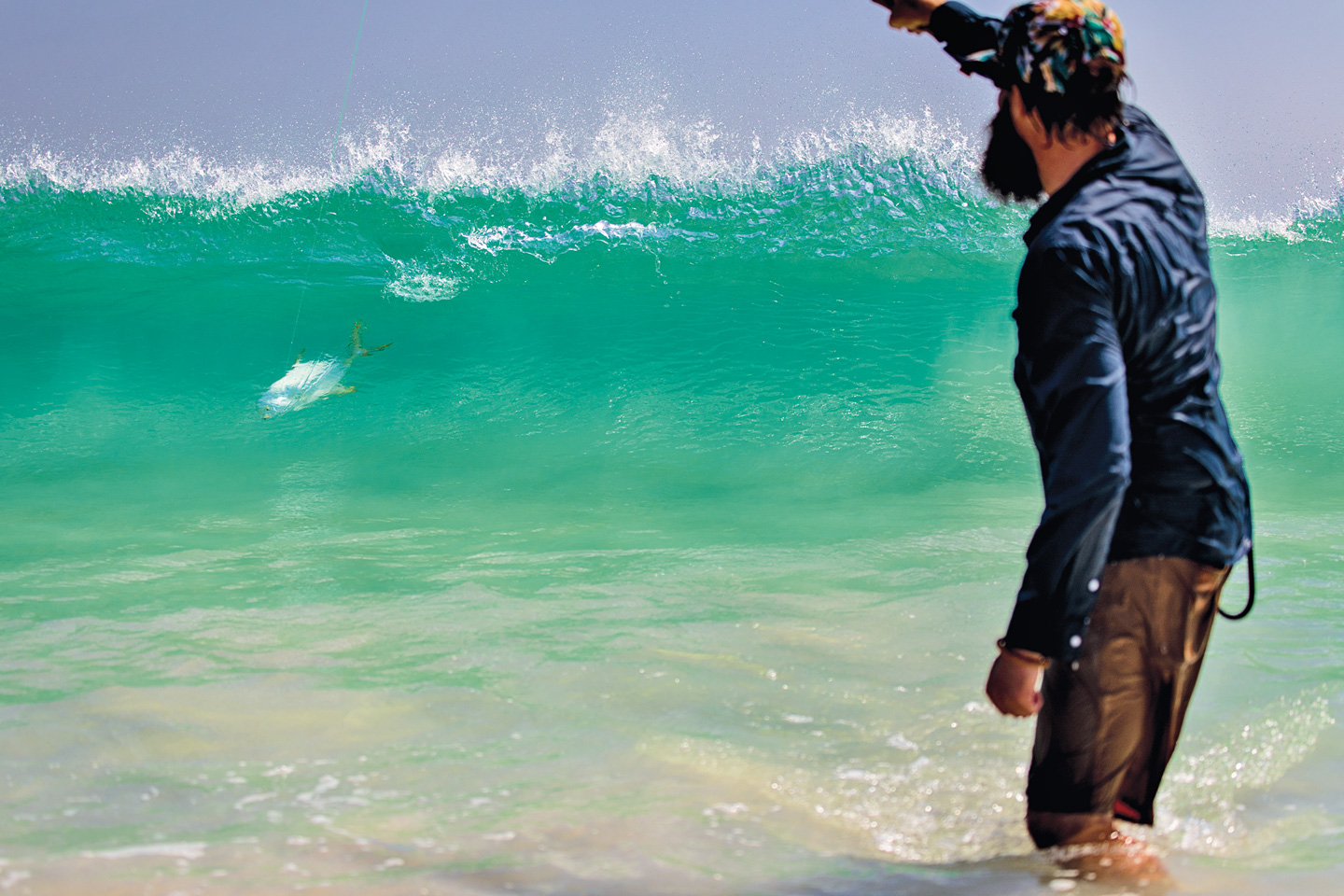
above All permit are good permit. Wave-riding permit are next-level angler satisfaction. Oliver White drops in with an Omani silver surfer. Photo: Adam Barker
Volume Nine, Issue Four
how this is done
To his credit, [Andre] Puyams seemed as comfortable in the midst of a bizarre barroom tête-à-tête as he did in the open acres of the Henry’s Fork. Our short conversation transpired like this:
Steketee: Again…
Puyans: Leeeeeaaaaave!
Steketee: Mr. Puyans…
Puyans: Meeeeeeeeee!
Steketee: Sorry to bother…
Puyans: Beeeeeeeee sirrrrrrrrr!
And seemingly resulted in a stalemate. I left Puyans with one final thought, which, miraculously was not met with interference, “Trout Fishing in America would be very proud of this entire encounter.”
Andrew Steketee, “Who the Hell is Trout Fishing
in America?”
Volume One, Issue One
So how did we do? O.K., we didn’t win. But we didn’t lose, either. Let’s just say that there are currently at least 22 hardcore, 80-mph-boat-owning, state-of-the-art-electronics-using, 50-pound-braid-chucking, tournament bass anglers currently on suicide watch for finishing behind the feather flingers. Or maybe it just sounds better to just say we won the fly division?
Dylan Tomine, “Operation Ditch Pickle: A Steelhead Bum Gets in Touch with His Inner Redneck”
Volume Two, Issue One
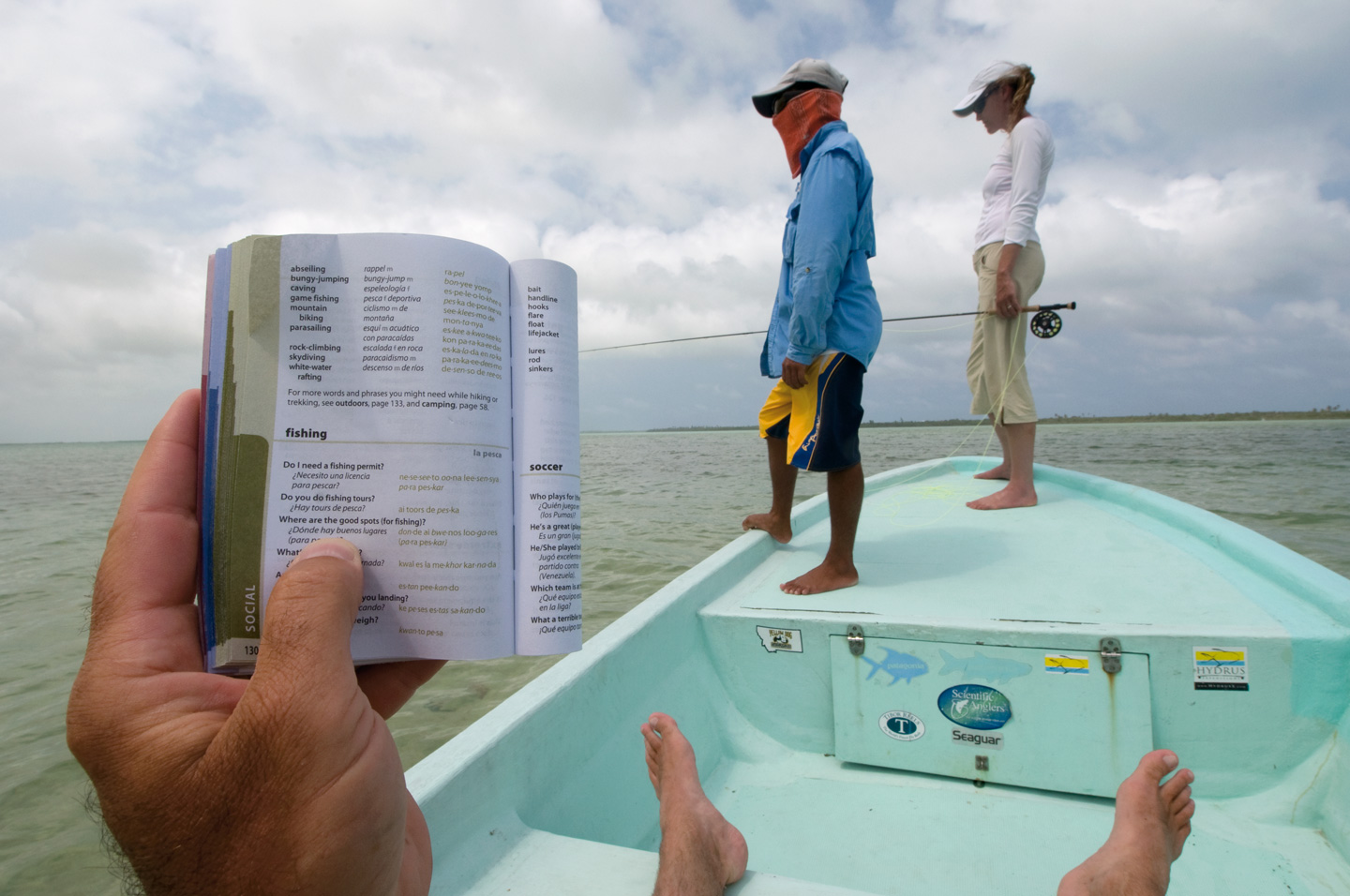
above “Last day of the trip as frustrations began to get the best of us. Water was crowded, windy and seemingly devoid of fish. The food poisoning that swept through camp also was an interesting highlight. The guides didn’t seem to mind. Thumbing through my Spanish dictionary, I was struck with an interesting epiphany….”
Ascension Bay, Mexico. Photo: Brian Grossenbacher
Volume One, Issue One
Forty-five bead head prince nymphs, 10 hooking-the-guide incidents, 12 hooking-his-own-shoes incidents, 25 whole-damn-rig-in-the-trees incidents, seven line-around-the-oars incidents, 13 debates regarding missed strikes, and three braining-the-guide-with-rod incidents. You need the patience of Job and an open script of Xanax for some fishing trips.
Kea C. Hause, Esq. “Bonedale Fishing Reports”
Volume Two, Issue One
How can I hide the fact that I’ve never fished this river before? Two clients and I embark from a DeHavilland Beaver float plane somewhere in the bush of Alaska. Equipped with vocal directions and a mental map, I play cool and look for a trail into the tall grass. My clients tell me they are terrified of grizzlies, and I’d like to agree.
Kate Taylor, “The Road Goes on Forever”
Volume Two, Issue Two

above Four trout and a cigarette. Photo: Liz Steketee
Volume One, Issue One
I tied on the same fly I always use there—a hare’s ear parachute—and left it on all day, which is sort of the whole point. If you get far enough up a bad enough road, you can find trout that don’t see a lot of flies.
John Gierach, “Jeepology”
Volume Four, Issue Four
Have a 225-plus-pound gentleman stand atop 10 feet directly behind you while tersely commenting on the suckiness of your accuracy. Ideally do this into a 25-knot headwind.
Jeff Galbraith, “Call of the Chickcharney. Heavy Juju on South Andros”
Volume Five, Issue Three
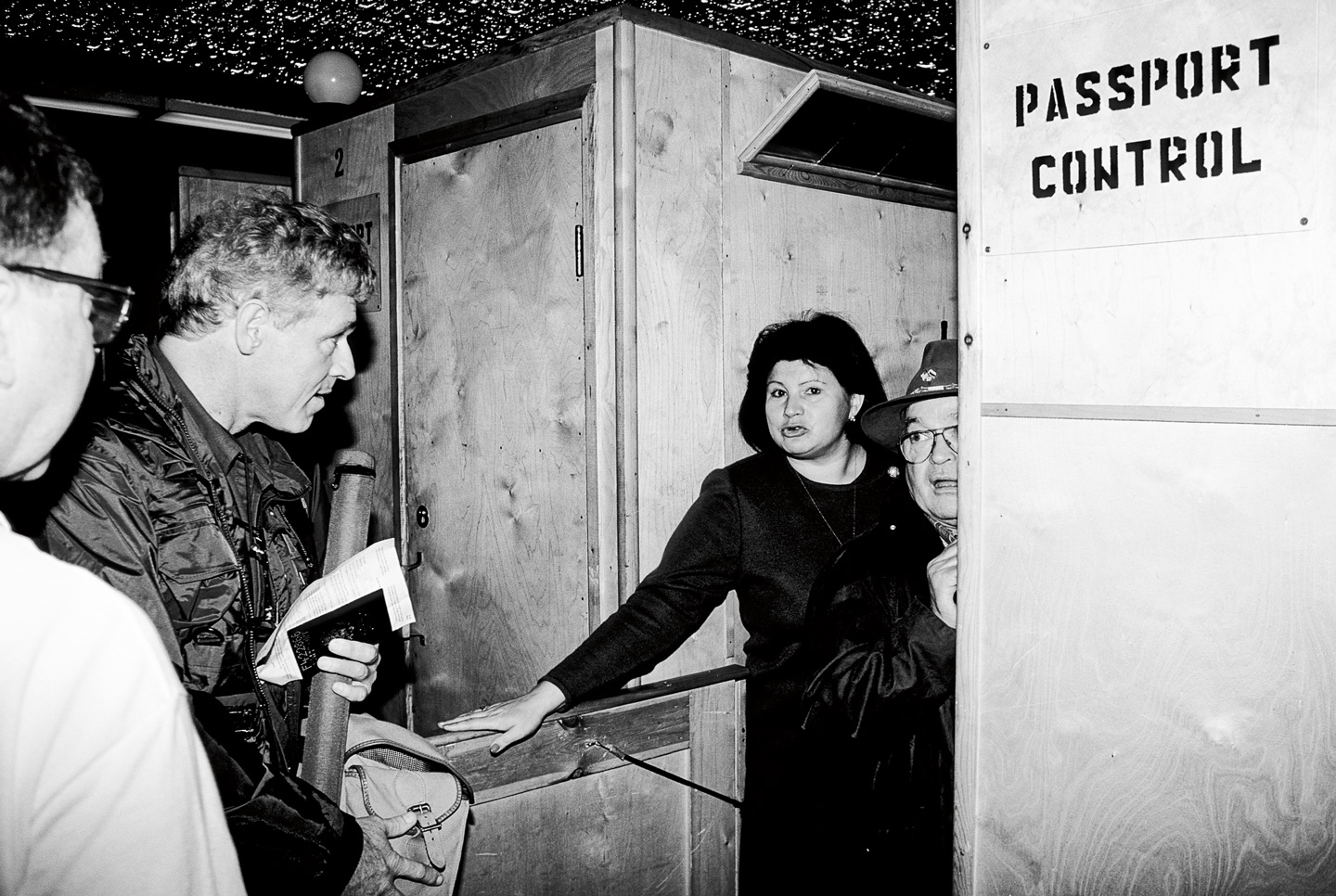
above Getting passports checked at a Russian control point produces a few moments of high anxiety. Photo: Val Atkinson
Volume Three, Issue One
The way we handle a fly rod says a lot about how we handle life. Less is more, be it false casts, words written, words spoken or unspoken, even the notes from our guitars. And as for speed—rushing, or anything to do with going fast—to heck with that. I take my time with everything, especially when standing in a marsh.
Nathaniel Riverhorse Nakadate, “Small Miracles in the Marsh”
Volume Six, Issue One
“I don’t know how those bones didn’t eat that fly, man.” Kasper is gesturing out toward the flats. He shakes his head, looks at his bare feet. “They were both all over it. Why didn’t they grab?”
“Sometimes life ain’t fair, dude.”
“Yeah, it almost never is.”
Steve Duda, “Pressure Drop”
Volume Six, Issue One
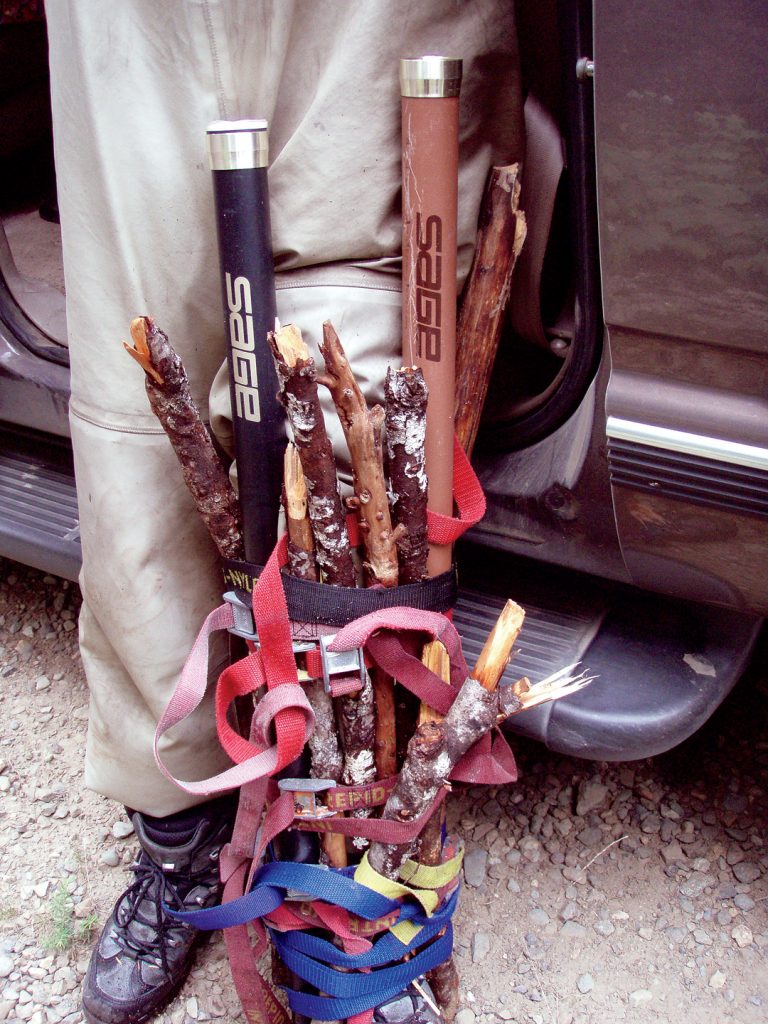
above When Huber Cooney fell victim to a spiral tib-fib fracture on a nameless creek in the mountains outside of Seattle, rod tubes made for a portion of a perfect splint—it took seven hours to get back to the car crawling around waterfalls and massive pools. Photo: Dave McCoy
Volume Three, Issue Two
I have come to believe getting permit to eat a fly requires the ability to convince yourself that you don’t care about catching them precisely at the moment when you care about catching them the most.
Tee Clarkson, “Permapathy”
Volume Seven, Issue Three
A few hundred feet away, Tim Arsenault is launching honest-to-God 150-foot casts every 15 seconds, the forward edge of his loop looking like the point of a samurai sword.
Dana Sturn, “The Cult of the Cast”
Volume Nine, Issue Two
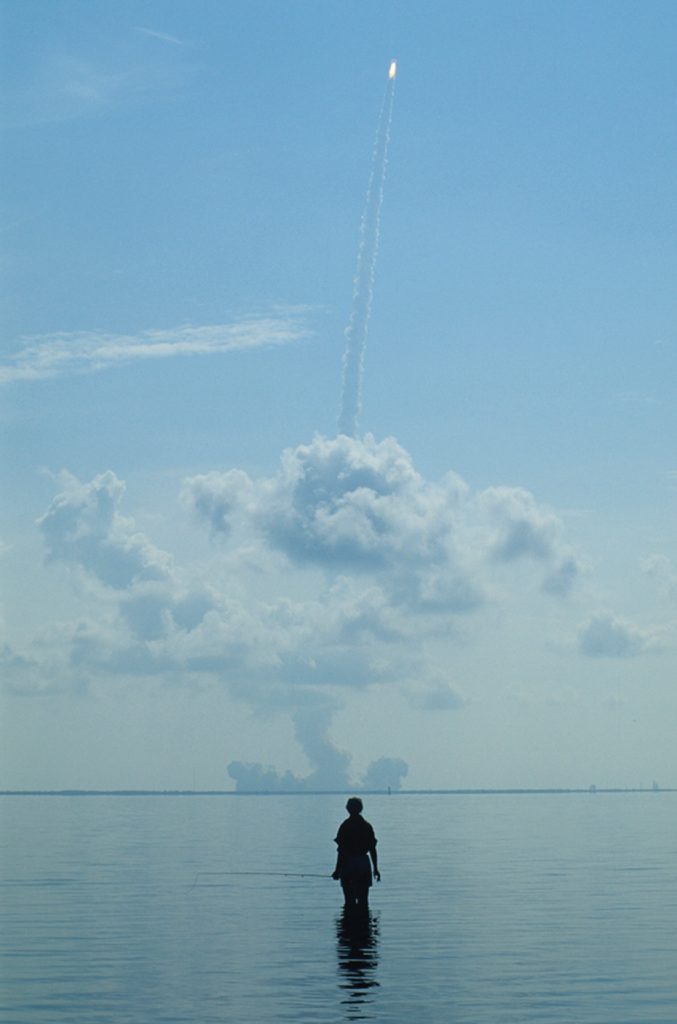
above Houston, we are getting skunked. Cathy Beck on Mosquito Lagoon, FL, watching a NASA space shuttle launch. Cathy said she could feel the entre flat vibrate as the launch began and the shuttle took flight. This liftoff was also the highlight of two fishless days. Redfish had lockjaw and shut out both Cathy and her friend Flip Pallot. Yes, even Flip Pallot gets skunked. Photo: Barry and Cathy Beck
Volume Five, Issue One
why we do this
And now this, The Flyfish Journal, at a time the world at large would tell us we are crazy to attempt such a thing. But flyfishing, and its culture of freaks and fanatics, have always provided an island of nonsensical joy in a world of over-efficiency. Nothing about it makes sense, which is perfect.
Jeff Galbraith, “Publisher’s Notes”
Volume One, Issue One
Small miracles just behind, small miracles await.
Steve Duda, “The Wind Remains the Same”
Volume Two, Issue One
Sunlight gold? Dark copper? Is that hue on their back green or olive? Are their bellies pink or scarlet? Does their skin, like the skins of their cousins, the rainbows, really exude a purple haze in places? And what about that characteristic slash under the jaw, or, rather, the lower mandible? Is it actually lipstick orange?
Jim Hepworth, “Madonna on the Snake”
Volume Two, Issue Four
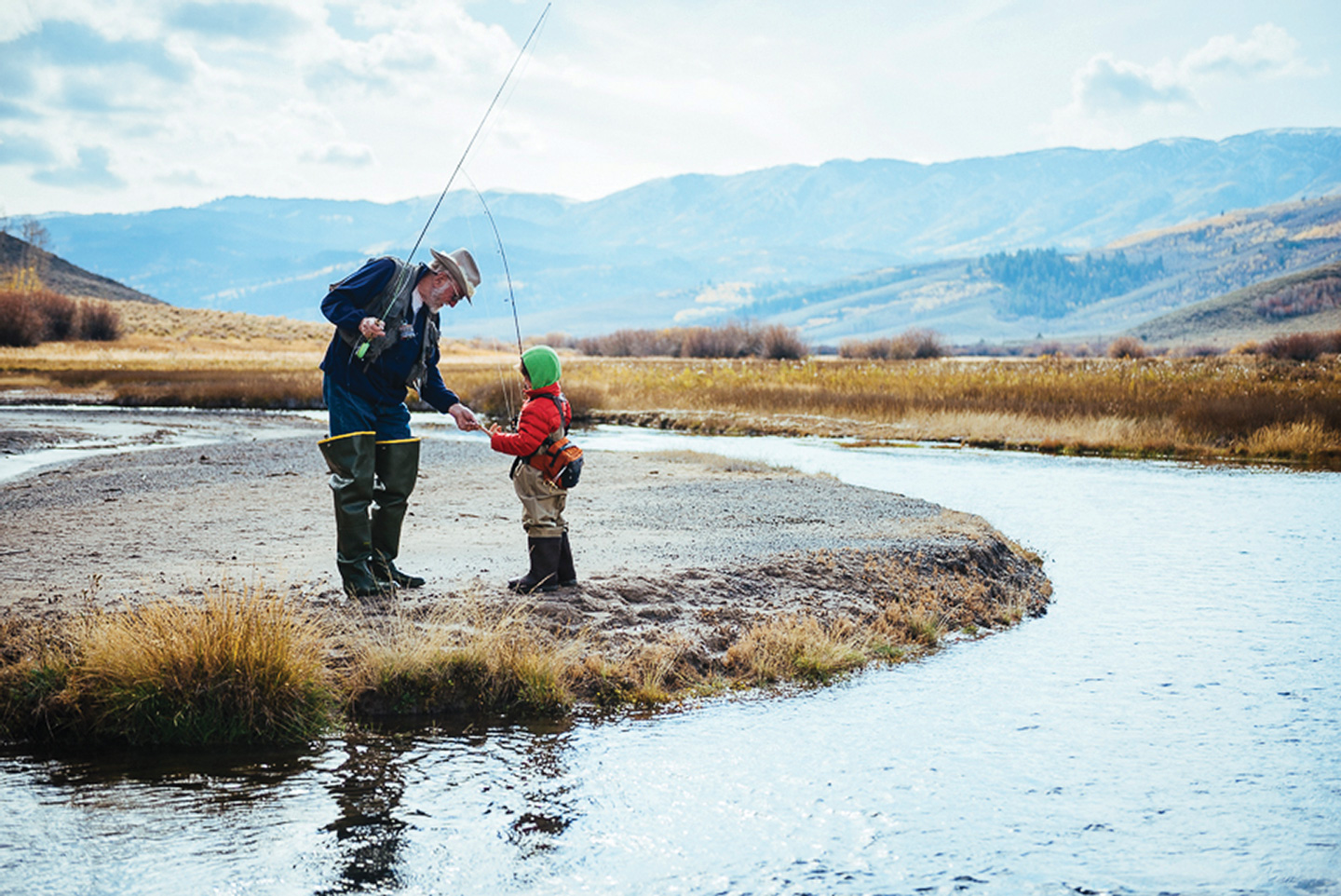
above “My old friend Pete Riede and my son, Alexander Watt, fish Pete’s stretch of Crow Creek in southeast Idaho. Pete’s an amazing flyfisherman and he helped introduce me to the sport many years ago. As a dad, it’s amazing to watch it unfold again on the same water with Alexander.” Photo: Jeremiah Watt
Volume Five, Issue Four
We ride and release a half-dozen five to eight pounders before 8 a.m. By 10 a.m., the wind is up and we’re back at the truck pulling cold Shiner Bock bottles from a cooler. We dig into a brown paper bag of chorizo and potato breakfast tacos from a favorite roadside stand in Back City and wipe our hands on our waders. I can feel a sublime sense of joy and satisfaction throbbing in my ribs, emanating and suffusing outward and I wonder, can we bottle this?
Nathaniel Riverhorse Nakadate, “Deep in the Heart: The Texas Vignettes”
Volume Four, Issue Two
It needs to rain to bring in the fish and wading knee-deep in the channel on the first day there’s no reason to be optimistic. But I am, and why not? It’s sunny and it’s salmon fishing. It’s not sitting at a desk, not slinging Happy Meals or digging ditches.
Aimee Brown, “Scratch Tickets: Training for Chinook on the Oregon Coast”
Volume Four, Issue Three
It is next to impossible to concentrate on a pod of rampaging Coho when a massive humpback whale is surfacing 100 yards from the boat. When that whale rolls on her back and starts slapping her fins on the surface of the ocean, forget casting. It can be difficult to simply draw breath.
Steve Duda, “The Gnarlies: Northern BC’s Topwater Coho”
Volume Five, Issue Two
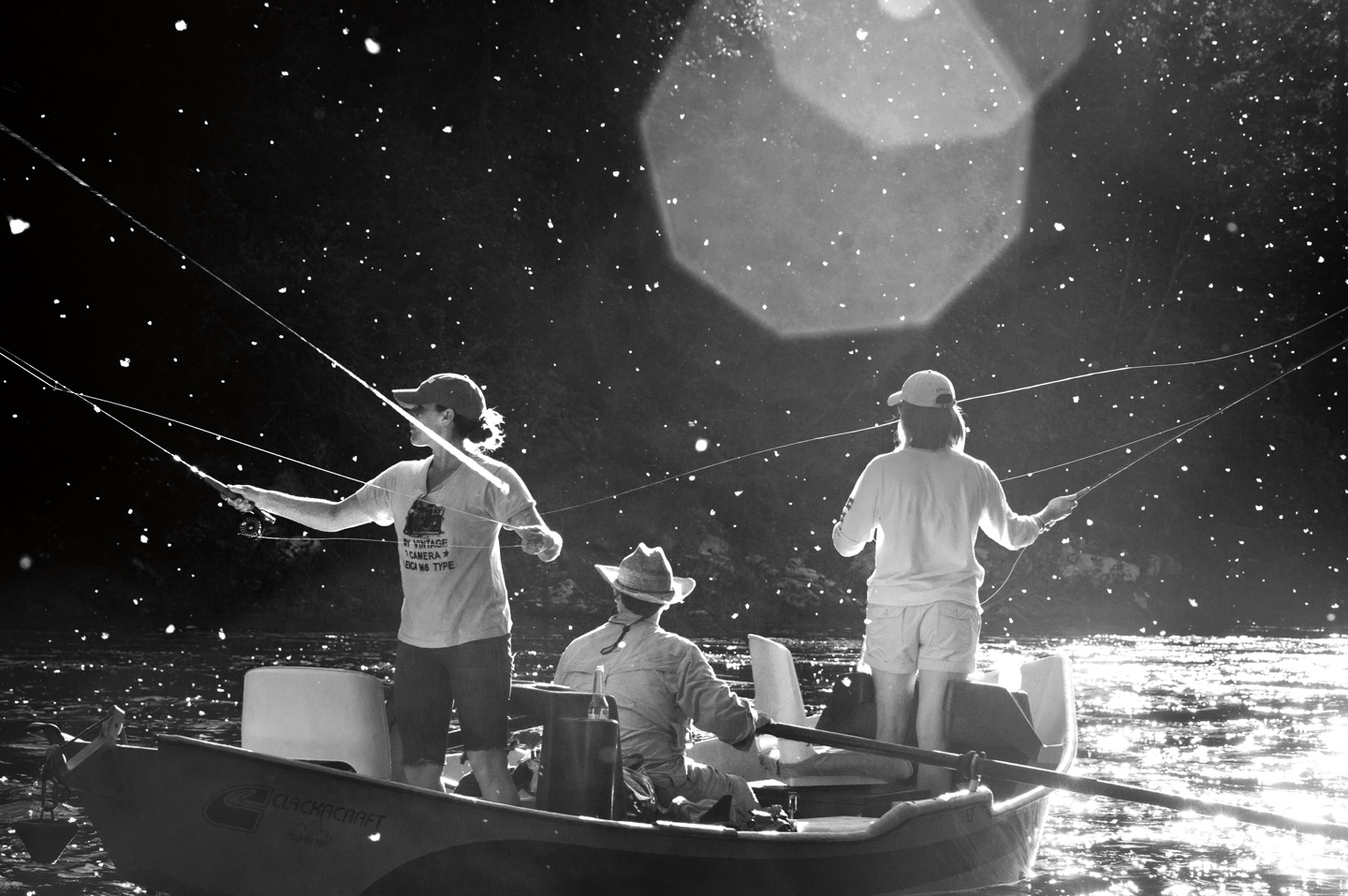
above Brilliant light and cottonwood seeds mix to provide a unique backdrop for Erin Haskell (right) and Anna McKelvey (left) to cast dry flies to rising cutthroat. Tim Cunningham mans the oars, keeping the Clackacraft between the banks of north Idaho’s St. Joe River. Photo: Jed Conklin
Volume Three, Issue Three
“Catch any?”
“No, but I made some good casts.”
Mark Hieronymous, “Fishing for the Perfect Cast”
Volume Six, Issue One
I find a piece of slack water to resuscitate him, and as I watch him regain his strength—this native, wild fish in the land of my ancestors—I’m overcome by a feeling of being held together more resolutely in space, as if prior to this I was a barrel without bands.
Dave Karczynski, “The Water Come Home: Headwaters and Heritage in Poland”
Volume Six, Issue Four
Yes, today. Yes, tomorrow. Forever, yes. Fish.
Cameron Scott, “Five Laws of Fish”
Volume Nine, Issue Three
This article was originally published in Volume Ten, Issue One of The Flyfish Journal.
